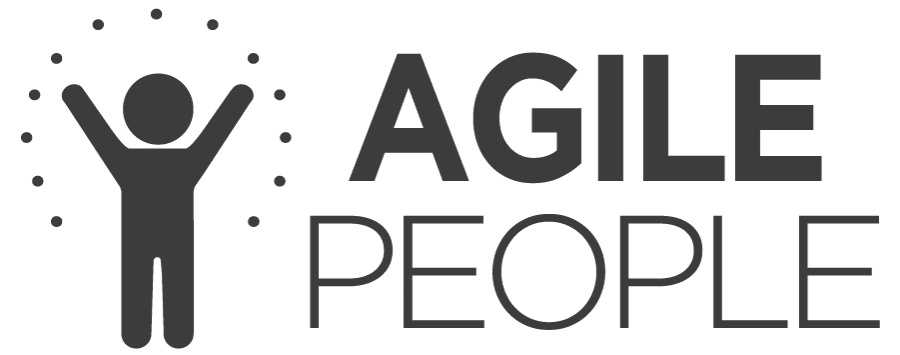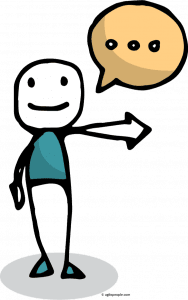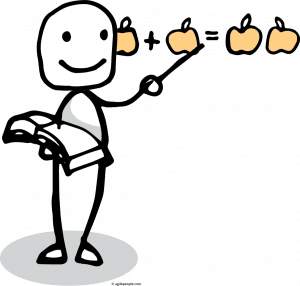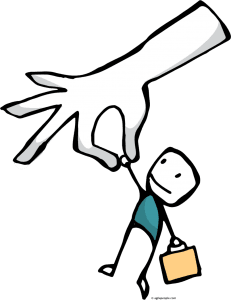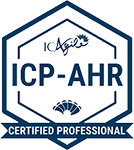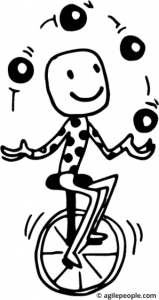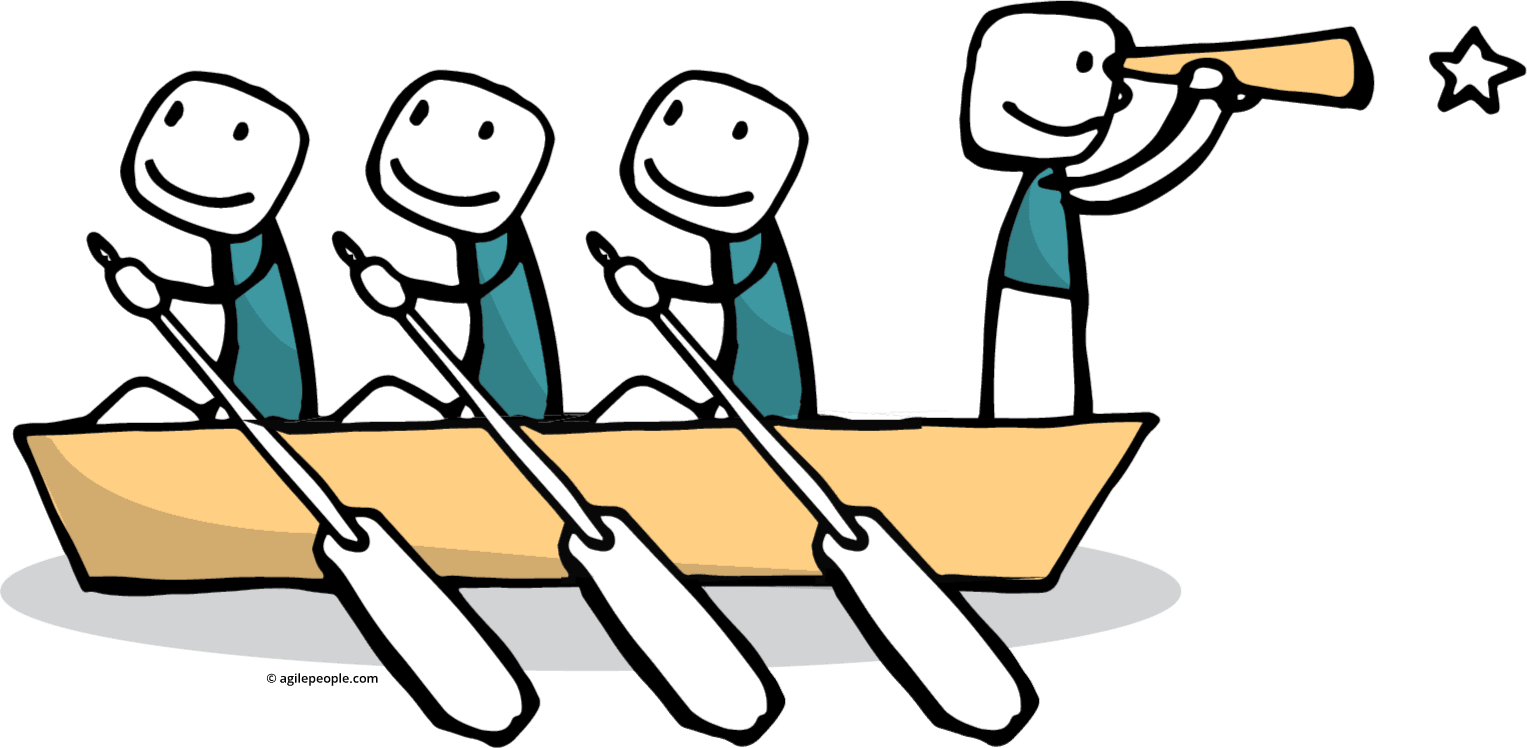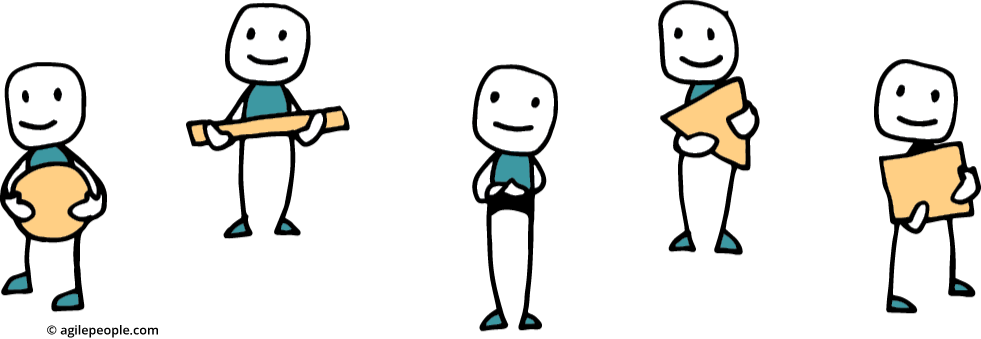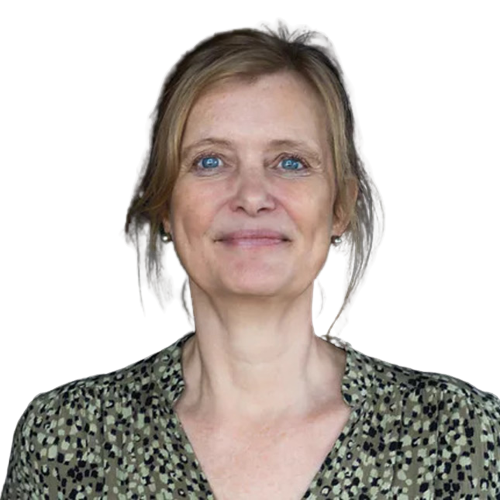
Agile People Coach
Agile People Certification
As an Agile People Coach, you will gain an understanding of how to create a more engaging work environment, where people perform at their best because they want to, not because they are told to, and where fast learning is key.

4-day in-person workshop, or 20-online sessions
A an Agile People Coach, you are working inside an organization (as an employee or a consultant) and want to spread the principles and values to every corner of the company. You want to bounce ideas and get inspired by a community of like-minded people who have the same goal: to increase business agility and help organizations on their learning journey/transformation by supporting HR and Leaders to attain an agile mindset.
In the future of work HR and Managers will need to take the role of Agile People Coaches, with the necessary competence about basic human needs, behaviors, teamwork, and how to support an emerging strategy towards the organization’s purpose.
The Agile People coach is an alternative career for traditional managers and HR representatives in the future of work. An Agile People Coach is more than an Agile Coach, although the basic understanding of agile values, agile tools and methods, systems theory, and organizations are the same. The difference lies in the deeper People’s perspective. During this training, you will learn how to coach people to find a place where they can be the best they can be and how to create conditions for people to perform together.
Agile People principles and work methods – need to form the basis for decision-making in a complex environment where the only competitive advantage is learning faster than competitors.
The importance of Psychological safety – what it means and how we can work actively to create a working environment that is characterized by a common view of how we can unlock everyone’s potential by making it ok to experiment and make mistakes and learn from them.
How to balance an agile culture with Agile structures – while supporting an emerging strategy where people are involved in goal setting and creating a common direction (via OKRs or other types of relative goals instead of fixed budgets and performance goals).
How to work on behavioral changes in social systems to achieve an Agile mindset and Agile culture – by changing impediment structures like annual budgets linked to fixed performance goals and rewards.
To develop a Learning Organization – by enabling collaboration between silos and using experiments to learn and innovate faster.
How HR and management can support an Agile organizational transformation – how to assess the current organizational structure and design a new structure that enables business agility, maximizes communication and collaboration within and among teams, and enables the flow of value.
Why Agility in Leadership is needed – why traditional approaches to management and leadership don’t always meet the needs of our transforming efforts. In particular, leaders will self-assess to determine how they might need to change their own behavior and attitudes to properly serve the needs of 21st-century organizations.
Leadership styles that increase Agility – learn different types of leadership styles and the impact they have on motivating behaviors to increase learning, innovation, and collaboration.
Personal Agility – how to develop yourself as a leader through self-assessment, self-management, and mindfulness.
Relationship Agility – models for emotional intelligence in the context of Agile organizations. Develop an awareness of the different systems found within organizations, the often hidden dependencies between them, and how conflict can arise when they have incongruent agendas.
Exercising Agility in key conversations – how to practice inquiry & advocacy skills, including framing invitations rather than demands and asking clarifying, opening, deepening, and provocative questions. Learn to enable high-quality conversations as a leader as opposed to always participating in them.
The Nature of Organizational Transformation and Agility – describe how transformation is different from typical sponsored change initiatives. Point out that transformation generally implies a change in purpose or strategy that is radical and systemic, while sponsored change initiatives are more limited and typically focus on the how and less on the what and why. Explain how traditional organizational change models designed for limited change initiatives may not provide all leaders who need to navigate transformation.
Why Transformation is needed for Agility – understand how established organizations need to undergo a transformation in order to develop agile capabilities.
Goal setting and performance management in a new way – appraise current performance management practices and identify ways of bringing Agile thinking to enhance performance, accountability, and growth.
Salaries and benefits for an agile organization – describe and contrast traditional incentive structures with Agile structures, discuss the pros and cons of each approach, and explain how to apply them to organizations.
Agile role modeling – how to develop an organizational action plan for role modeling an agile mindset and to build new skills that will enable cross-functional teams.
Employee engagement in an agile manner – recommend different motivational tools to be applied in a context and describe how the traditional employee engagement survey is changing.
Talent acquisition and the candidate experience – design a sourcing strategy that can be used to find and acquire the “right” people to support the strategic growth of the organization taking values, culture, diversity, and collaboration into the hiring decision.
Agile learning – suggest ways to enable and support a learning mindset in a team, supporting the shift from a focus on deficiencies to a focus on the development of new skills and capabilities.
Onboarding practices for agile companies – design an onboarding experience that enables new employees to become a part of the organization rapidly and smoothly.
Why the agile mindset is HR’s responsibility – design the talent/people elements needed to help support an Agile transition in an organization and explain how different contexts can influence the approach to be taken.
The needed changes in the HR core function – relate how the need for business agility affects the HR function and organization and how it impacts HR team members’ roles and behaviors.
Practical tools, templates, and exercises for HR – how an HR department can work with agile tools and methods, for example with Kanban, Sprints, Scrum, and Retrospective.
Agile People Coaching – learn methods for coaching and how Agile People Coaching differs from agile coaching.
Self-assessment – understand your own capabilities and how to improve these.
Self-leadership – develop an understanding of what motivates you and how to communicate with other people to understand their motives.
Conflict Coaching – learn how to create a balance between harmony and conflict in teams and organizations.
- Agile Coaches who want to understand how to help HR and Leaders to attain an agile mindset and support them in change initiatives
- Leaders or HR-professionals at any level in an organization who aspire to lead an organization on a business agility journey
- Leaders who see the value of growing an agile organization, and are committed to developing themselves as agile leaders in order to achieve that aim
- Anyone wishing to learn about the paradigm shifts necessary to lead in adaptive environments, and to develop relevant leadership and HR capabilities to support the change
- HR-Consultants, Management Consultants, Change Managers or Agile Coaches who want to use the Agile People course content and exercises as part of their product portfolio
This training can be completed with a certification from the International Consortium for Agile (ICAgile), a certification and accreditation body. ICAgile works with course providers to accredit new or existing courses against comprehensive and proven Learning Outcomes. ICAgile collaborate with worldwide agile thought leaders to develop learning programs that lead people to agile mastery. Learn more about ICAgile
Agile People is an ICAgile Member Organization and this is an ICAgile Accredited Course.
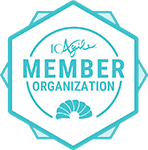

For this training, you will take part in a 4-day in-person workshop or 20 online 2-hours sessions.
Day 1 or Session F1-5 Agile People Fundamentals
Session F1: Introduction to Agile People and Important Principles/Tools
The foundation of Agile Peoples’ mindset is about the principles, values, methods, and tools that we need to start using to release competence and innovation – and what we stop doing. We discuss your challenges and go through the certification assignment. This session is an introduction to the agile way of working and thinking.
Session F2: Psychological Safety as a Foundation for a Learning Organization
The importance of an approach that is permeated by security and confidence to increase profitability and innovation is emphasized in this session – we need psychological safety to increase creativity through a culture where it is ok to fail fast and try again. We play “The Psychological Safety Game” to facilitate the dialogue about difficult topics
Session F3: Emerging Strategies, Structures, and Goals
Emerging strategies instead of long-term planning, new ways of working with strategy, budgets, goals, performance processes, and rewards. Using value stream mapping to optimize flows in a system instead of working with resource optimization and sub-optimization of departments. Mindset Slider exercise. WoWs to be used: Beyond Budgeting, OKRs, Impact Mapping, VSM, etc.
Session F4: Building Conditions for an Agile Culture
In this session, we explore how you can create conditions for a fantastic culture where people can perform at their optimal level with a sense of being supported and secure. The gap between structures and culture/values is discussed. Structure – Culture Misfit Role Play. The importance of country culture for an Agile transformation.
Session F5: Creating conditions for Change
In today’s fast-moving environments and complex environments, we are challenged as people and as organizations to be much more responsive and adaptable, to have the capacity to navigate in complexity. How can we make sense of things when things keep changing, how can we make decisions and act when most of the time we don’t have all the information we need?
In this module we explore VUCA, we try out a sense-making and decision enabling framework for leaders (CYNEFIN), and we explore what enables our organizations to become true learning organizations.
Day 2 or Session L1-5 Agile People Leadership
Session L1: The Why & What of Leading with Agility
In this session, we explore the changing environment & dynamics that call for a different approach to leading and following. We look into the misalignment between what managers think drives their people, and what people – knowledge workers specifically – expect from the people managing and leading them. Finally, we explore our own personal understanding and expectations.. what are some of the attitudes, expectations, and concrete behaviors we expect to see from people who lead with agility.
Session L2: Behaviors that Enable Agility
When you wish to make a radical change or transformation, understanding three things enables you to make the shift. Where are we coming from, where are we now, and where are we heading toward. In this session, we explore the evolution of leadership theories and which leadership styles and approaches they have given birth to. We determine what is still relevant.. and what needs to change. A big part of that shift comes from understanding the nature of Power & Influence, and how the ways in which we gain power might be changing. Finally, we look into specific qualities & competencies we can cultivate and develop to increase our own personal agility.
Session L3: Knowing & Connecting with Yourself
If we cannot understand and embrace ourselves, we have little hope for fully understanding and accepting others. Understanding why we react to things in certain ways gives us the insights and ability to better choose our responses and change how we show up in our interactions. Leading others starts with developing our own self-leadership. In this session, we explore ways to map and become more aware of our own experiences. We dive into heuristics – cognitive biases – to understand how they work and influence our thinking; how we can become more aware of them and most importantly.. how we can counter them.
Finally, we explore specific leadership mind-traps, and how we can unlock those mind-traps to show up in better ways as leaders.
Session L4: Developing & Leading Ourselves
Having gained some insights into how we can know and connect with ourselves to choose how we respond to situations and show up in our interactions with others, it’s now time to put that into practice. We familiarise ourselves with the Clear Leadership model developed by Gervase Bushe, and how to develop the 4 selves of the Leader.. the Aware Self, the Descriptive Self, the Curious Self, and the Appreciative Self.
We explore several different contexts where we can put these into practice… to better check-in with people; give and receive effective feedback, step into coaching leadership, and defusing conflicts through creating inter-personal clarity.
Session L5: Skillful Communication
Communicating effectively; relating to others, creating and maintaining healthy interactions, having productive conversations, and ultimately the ability to influence others requires both practice and an understanding of the dynamics of effective communication. In this session, we work on the dynamics of effective communication through the lenses of several mental models; the dynamics of productive conversations, and the power of effective storytelling to move and influence others. We explore 3 types of stories we can learn to identify and narrative patterns that help you tell compelling stories as a leader.
Day 3 or Session H1-5 Agile People Leadership
Session H1: How HR’s role is Changing when we need to Increase Business Agility
Design the talent/people elements needed to help support an Agile transition in an organization and explain how different contexts can influence the approach to be taken. Job titles, competency profiles, titles, career, succession – how do we do it in an agile organization? User stories for HR and a T-shaped HR-person. Employee Journey mapping – pain points. Examples and cases.
Session H2: How HR can use Tools and Practices from Agile
Using Scrum, Kanban, Value Stream Mapping, and OKRs for HR is not so different from using it for Software development. What are examples and how can you design talent/people processes using the agile ways of working? User stories for HR – what do they look like? Examples and cases of Agile HR in reality.
Session H3: Goals and Performance Management and Compensation and Benefits
Appraise current performance management practices and identify ways of bringing Agile thinking to enhance performance, accountability, and growth. 95/5 Exercise. Describe and contrast traditional incentive structures with Agile-friendly structures, discuss the pros and cons of each approach, and explain how you could apply them to your own environment.
Session H4: Talent Acquisition and Onboarding
Design a sourcing strategy that can be used to find and acquire the “right” people to support the strategic growth of the organization taking values, culture, diversity, and collaboration into the hiring decision. Design an onboarding experience that enables new employees to become a part of the organization rapidly and smoothly.
Session H5: Learning and Development and Employee Engagement
Suggest ways to enable and support a learning mindset in a team, supporting the shift from a focus on deficiencies to a focus on the development of new skills and capabilities. Recommend different motivational tools to be applied in a context and describe how the traditional employee engagement survey is changing.
Day 4 or Session C1-5 Deep dive into Agile People Coaching
Session C1: Agile Coaching and the Four Roles of a Coach
Mentoring, teaching, facilitating, and coaching are the stances of an Agile Coach – they need to master all of them to be successful and pick the right stance depending on the organization, situation, and the people. But what is the difference between an Agile Coach and an Agile People Coach?
Session C2: The Agile People Coach – a new Role for HR and Managers
In this session, we examine the nine roles of the Agile People Coach and a self-assessment – how skilled are you in the different roles and where do you need to improve. What are the skills that you need to add as a regular Agile Coach, Leader, or HR-person if you want to increase your agile & people skills and to be able to call yourself an Agile People Coach? We look at scenarios for practising when to take what role.
Session C3: Professional Coaching
To understand the roles of the Agile Coach and the Agile People Coach, you need to also have some knowledge in Professional Coaching and knowing how to formulate and ask suitable questions to guide and lead a person to understand what needs to be done in any situation.
Session C4: My Motivation Profile as a base for Self-leadership
Who you are and what makes you do what you do is very personal and different from the why of others. Communicating with people who are different from yourself and knowing how to understand what makes other people do what they do and how they are different/similar to you is crucial competence in agile environments. We develop My washing instructions and discuss how your needs affect your life and work.
Session C5: Conflict Coaching
Exploring conflict theory and finding the right balance between harmony and creative conflict in a team or organization is a key competence when moving towards high-performing teams. In this session, you learn different models for dealing with conflict and how to understand conflict escalation and different types of conflicts and how to handle conflict in a team.
Your course leader and facilitator vary depending on location and dates. See more details in the events
If you attend a course that is delivered online, we will work with Zoom for presentations and team exercises, Mural as a digital canvas, our own Campus for keeping track of the agenda items and exercises, and Slack for communication between the sessions. You will receive links to all of the tools used in the training including the Learning Management System that will provide you will all the documents and videos in between every session.
There will be some work to be done after every session, so add about 5 hours more every week. Course literature and material will be sent to your location and distributed digitally. The certification assignment will be accomplished in the time between the sessions so that you will be ready on the day of the last session.
